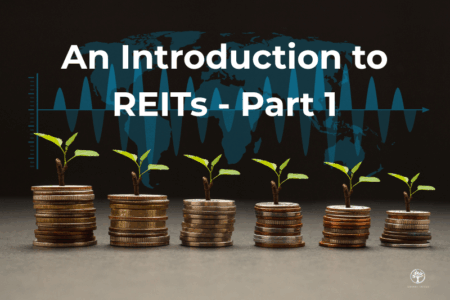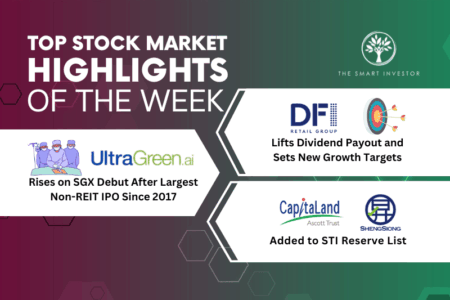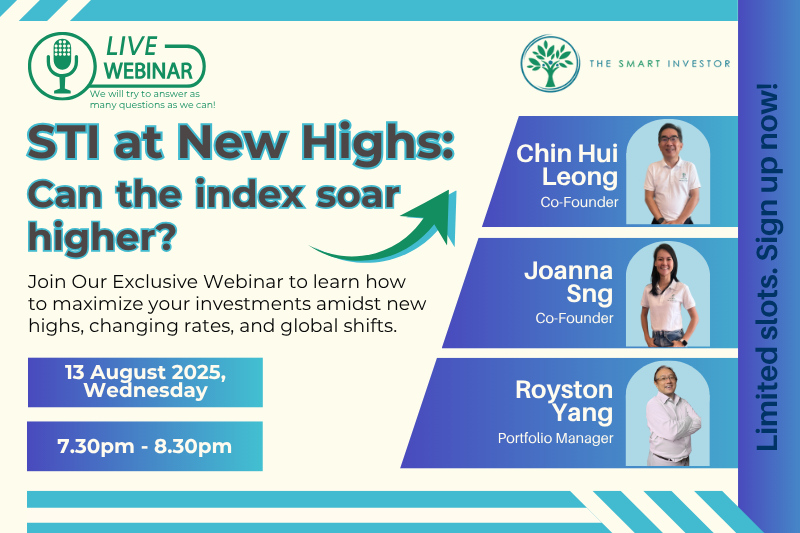Imagine turning back the clock to 2015.
There’s no ChatGPT yet.
We don’t know that a pandemic will cause a shutdown in a few years’ time.
And you’re trying to decide where to invest your money.
What if you bought 1,000 shares of DBS back then?
Now fast forward to today, 28 May 2025.
Time travel fantasies aside, there is something deeply satisfying about looking back at what could have been.
Today, we are revisiting one of Singapore’s most prominent bank stocks: DBS Group Holdings (SGX: D05).
And if you had purchased 1,000 shares of DBS exactly a decade ago and simply held on, the numbers may surprise you.
Before we continue, this is not just a story about DBS.
It is a reminder of how time, dividends, and staying invested can quietly transform your financial future.
How S$19,000 Can Turn Into S$55,000
On 28 May 2015, DBS was trading at S$18.62 per share.
Buying 1,000 shares would have cost you S$18,620. Admittedly, this is a hefty amount for a retail investor.
At the time, DBS was already Southeast Asia’s leading financial services group. Having emerged strongly from the 2008 crisis, it was expanding across the region and laying the foundation for a digital transformation that would define its next chapter.
Still, the environment was not perfect. Banks globally were under pressure from low interest rates and tighter regulations. Patience would be required.
The Capital Gains: Quietly Compounding
Fast forward 10 years. On 28 May 2025, DBS was trading at S$44.53.
That same 1,000 share investment is now worth S$44,530. That is a capital gain of S$25,910, representing about a 139% return — more than doubling your money. Not bad for a stock some might have called boring.
Annualised over a decade, this works out to an 8.15% per year return, beating inflation and outpacing many other asset classes over the same period.
But Wait, There’s More: Dividends
Here is where the story gets better.
Over 10 years, DBS paid out S$10,970 in dividends to investors holding 1,000 shares. That is cash in your pocket or better yet, cash you could have reinvested. Many companies make dividend payments on a yearly or half-yearly basis but DBS pays out dividends every quarter.
Including these payouts, your total investment value rises to S$55,500, and your total profit climbs to S$36,880.
Your return is a remarkable 198%, or an annualised return of roughly 10.55%. That is the magic of dividends, and why they are often the unsung hero of long term investing.
A Quick Snapshot
| Metric | Without Dividends | With Dividends |
| Initial Investment | S$18,620 | S$18,620 |
| Share Value Today | S$44,530 | S$44,530 |
| Dividends Collected | S$0 | S$10,970 |
| Total Value Today | S$44,530 | S$55,500 |
| Total Profit | S$25,910 | S$36,880 |
| Return (%) | ~139% | ~198% |
What Fueled DBS’s Rise
Several long term drivers contributed to DBS’s strong performance.
The bank invested heavily in its digital transformation, introducing user-friendly apps, improving its underlying infrastructure, and becoming one of Asia’s most respected digital banking platforms.
Its expansion across Southeast Asia enabled DBS to tap into high growth markets such as Indonesia, Vietnam, and India.
Rising interest rates in recent years also helped widen net interest margins, further boosting profitability.
That’s not all.
DBS’s fee income has also been on a tear as it welcomed higher wealth management fees and credit card fees from an increase in managed assets and consumer spending.
Even through the pandemic, DBS demonstrated resilience. It maintained dividend payouts and strengthened its reputation as a stable, well managed institution.
Lessons for Investors
This 10-year case study offers valuable lessons for anyone building long term wealth in the stock market.
First, patience is often your most powerful asset. DBS’s strong returns came not from flashy moves or short term trades, but simply from holding a great company through ups and downs. Even when markets stumbled, those who stayed the course were rewarded.
Second, dividend income plays a crucial role in long term returns. Many investors focus solely on capital gains, but in DBS’s case, over 30 percent of the total profit came from dividends. That steady stream of income can make all the difference, especially during years when share prices stay flat.
Third, strong businesses with clear strategies and disciplined execution tend to outperform. DBS did not succeed by chance. Its leadership in digital banking and its expansion across Asia were the result of years of consistent planning, investment, and delivery.
Get Smart: So, should I still buy DBS today?
Of course, the next decade will bring its own challenges and opportunities. Market conditions change, and no investment is without risk.
But DBS’s fundamentals remain solid. Its digital capabilities, regional footprint, and strong balance sheet position it well for whatever comes next.
For those considering DBS today, it may not be as undervalued as it once was. But the principles that made it a winning investment in the past — discipline, dividends, and durability — are still worth paying attention to.
Sometimes the best performing stocks are not the most exciting ones. They are simply the ones that keep showing up, year after year.
Boost your portfolio’s returns with 5 SGX stocks that promise both stability and steady growth. We bring you the names of these rock-solid stocks, including why they could drive massive dividends over the next few years. If you’re looking to invest for retirement, this guide is a must-read. Click HERE to download now.
Follow us on Facebook and Telegram for the latest investing news and analyses!
Disclosure: Joanna Sng of The Smart Investor owns shares of DBS.





